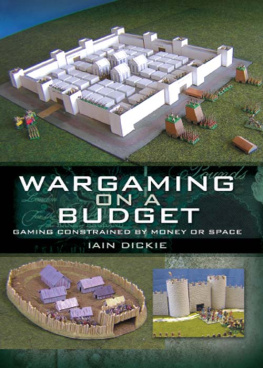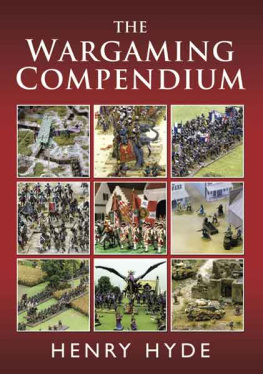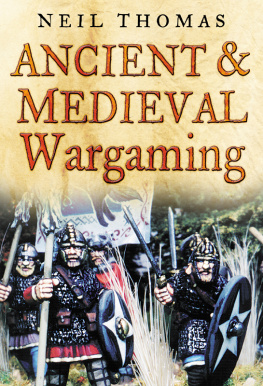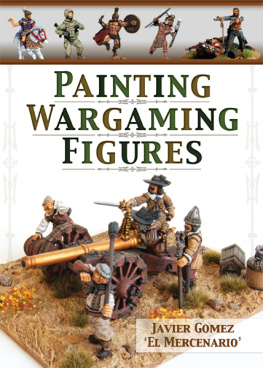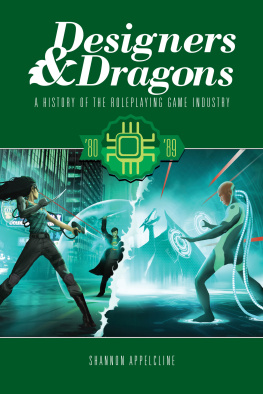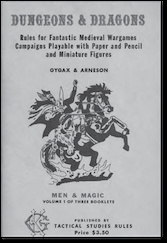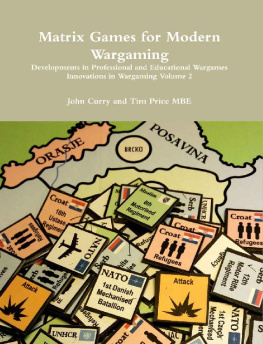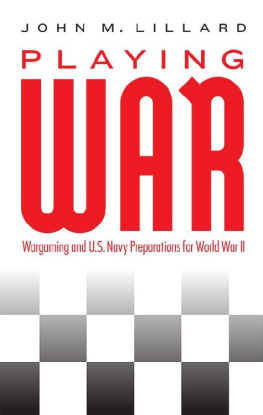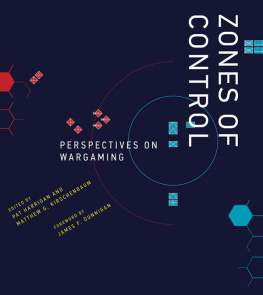Wargaming
on a Budget

First published in Great Britain in 2010 by
PEN & SWORD MILITARY
An imprint of
Pen & Sword Books Ltd
47 Church Street
Barnsley
South Yorkshire
S70 2AS
Copyright Iain Dickie, 2010
ISBN 978-1-84884-115-4
Digital Edition ISBN: 978-1-84468-213-3
The right of Iain Dickie to be identified as the author of this work has been asserted by him in accordance with the Copyright, Designs and Patents Act 1988.
A CIP catalogue record for this book is
available from the British Library
All rights reserved. No part of this book may be reproduced or transmitted in any form or by any means, electronic or mechanical including photocopying, recording or by any information storage and retrieval system, without permission from the Publisher in writing.
Typeset by Concept, Huddersfield, West Yorkshire Printed and bound in England by the MPG Books Group.
Pen & Sword Books Ltd incorporates the Imprints of Pen & Sword Aviation,
Pen & Sword Maritime, Pen & Sword Military, Wharncliffe Local History,
Pen & Sword Select, Pen & Sword Military Classics, Leo Cooper,
Remember When, Seaforth Publishing and Frontline Publishing
For a complete list of Pen & Sword titles please contact
PEN & SWORD BOOKS LIMITED
47 Church Street, Barnsley, South Yorkshire, S70 2AS, England
E-mail:
Website: www.pen-and-sword.co.uk
Introduction
Like life, wargaming is a series of compromises. True, we would all like to refight Waterloo in 1:1 scale. But we have neither the money to buy all the figures, the space to lay them all out nor the time to paint them all. So we have to compromise. The figure ratio can let, perhaps, fifty men be represented by just one figure. The figure scale can let that figure be between 6mm and 54mm high. Metal, plastic or homemade figures? another decision. Then what sort of table-top: permanent or temporary; and how big? You can create a decent game on a table just 60cm square. However, wargaming is a visual spectacle as well as a challenging game so we want the biggest table possible, or should that be the biggest practical? What of the terrain? Can you scavenge building sites for off-cuts of insulation to make hills or the garden to grow your own trees? Should you consider making a budget? Where do you want to spend the most money: the table, the figures or the terrain? Getting these variables just right for you can make game after game satisfying, memorable and pleasurable. Get them wrong and you could be driven to a downward spiral of frustration, rage and despair and end up turning to golf or politics.
In this book I hope to help you come to the right decision for your circumstances and show you how to fulfil those decisions within your personal budget. If we could talk face to face this would take the form of a series of questions and answers to get you to a personal gaming nirvana. Since this is a book, I am going to have to provide all the answers to those questions and you will have to pick those that fit your pocket, abilities and available space. Inevitably this will require some practical ability on your part but Ill help you develop the skills you will need. Some of these skills might also be useful in other jobs around the home so best to find an excuse or youll be building shelves instead of battalions.
If you get stuck please feel free to stop me at one of the war-gaming shows around the UK and Ill do my best to help out.
Good luck and may your dice always roll high!
Iain Dickie
Chapter 1
Resources
Space, Finance, and Materials
Space
The first resource and the one you probably cant do anything to alter is the space you have available. What you can do is make sure the table will fit within that space and ensure it is small enough for you to reach the middle. To stand or sit at a table you need a space at least one metre wide; your opponent will also need a metre. If someone will frequently pass by that distance needs to increase to 1.6metres or you will be forever getting nudged, possibly nudging the table in turn and risking disaster should figures spill onto the floor. To comfortably reach the middle of the table it needs to be no more than 1.8 metres wide, though the UK standard width of sheet wood is 1.2 metres, which may be more economical. More of the table later.
Although most of us place a short end of the table up against a wall, you and your opponent will need to get around the other end; thats another metre. If that part of the room is also the passage between two doors you probably need to increase that space to 1.6 metres. All of these distances need to be inside any furniture that might already be in the room. So, now you can measure the room and deduct the widths above and allow for any furniture. That gives you the maximum size table you can play on in comfort. It may well be there is already a table or bed in the room which could be used as the base for your table. Thats fine and well look at construction alternatives later.
Finance
The second resource, but one which you can do something about, is finance. The first rule of juggling your finances is to get all of the information together. Since this book is a holistic approach to the subject of Wargaming on a Budget I am going to briefly cover that here.
The modern way is to draw up a spreadsheet on your computer. Start on the first, left hand, column. On the second line enter brought fwd. On the third line enter the word income. If you might get money from more than one source enter income (2) on the next line and repeat so you get a separate line for each source. The next line needs to be total in. Skip a line and enter all the things you have to spend money on; rent/mortgage, gas, electric, council tax, food, going out, reserve, wargaming, so you get a new line for each sort of expenditure. The final expenditure line should be total out. Now, across the top line in the second column enter the month, April or whatever, and continue with the months of the year right across the page, until you have a full year.
Now you can start keying in the actual sums. From your last bank statement enter the balance at the end of the previous month in the first brought fwd box. Be honest with yourself. The reserve or savings box should aim for about 10 per cent of the total in and this sum should be stowed away in a savings account for your emergency use only. Dont forget to include the one-off annual things like car tax or TV licence. Use the formula facility on the program to add the income figures into the total in box and the expenditure figures into the total out. Use the formula facility again to deduct the total out from the total in box and enter the answer in the brought fwd box in the following column. These formulae repeat for each column. Enter the figures for a whole year ahead. If the brought fwd box becomes a negative figure that means you have gone into the red and are either spending too much or earning too little. It happens to all of us so dont panic. But, you do need to do something, preferably before your predictions become a reality. Getting used to doing spreadsheets will also stand you in good stead if you ever start a business. But running a business will eat into your gaming time, so best not to bother.
The hardest thing with this sort of plan or budget is to stick to the plan, so the following idea might help or it could stand alone as another way of budgeting. When I was a lad, before personal computers, credit cards and pocket calculators, my parents used to keep a collection of empty jam jars (clean ones!), each with a label showing a particular form of expenditure. Gas, electric, rates etc. On pay-day my mother would pop a certain sum into each jam jar sufficient to last until the next pay-day. It works but you need strong willpower not to borrow from one jar when another runs low. It also cant predict future problems so the reserve jar needs to be bigger than all the others and you still need to stow away 10 per cent of all income. See, there is always an alternative to using an expensive computer!
Next page
